Cooling system and backplate
Palit has made significant changes to the design of the new cooler, which we will discuss in a while. First of all, here are the facts:
| Cooling system at a glance | |
|---|---|
| Type of cooler: | Air Cooling, 2.5 Slot |
| Heatsink: | Copper Heatsink Heatpipes on the back |
| Cooling fins: | Aluminum, horizontal alignment narrow, relatively large cooling surface |
| Heatpipes | 2x 8mm, 1x 6mm and 2x 4mm Copper composite material |
| VRM cooling: | about extra Heatsink Coils are cooled extra |
| RAM cooling | over circulating Heatsink frames |
| Fan: | 2x 10 cm, 9.5 cm rotor diameter 15 rotor blades each, optimized for static pressure consistent, semi-passively regulated |
| Backplate | Aluminum, blackened passively used to cool the VRM |
The backplate is primarily used for optical enhancement and stabilization. The two thermal guide pads support the VR heatsink, which is already working very well, but due to its above-average performance hardly add to the gains. The area below the GPU socket has been omitted.
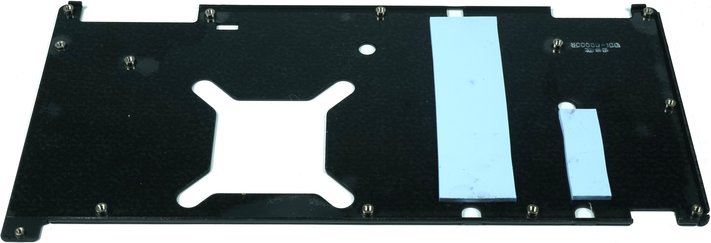
The heat sink for the voltage transformers takes into account the two order series. On the coils there are now also thick thermal guide pads, so that some waste heat can be disposed of here via direct contact with the cooling fins.
The flat heat sink rests large on the GPU and the heatpipes are flattened to its back. The other side of the heatpipes contacts the cooling fins, which have been angled by 90° in this area. With the three narrower heatpipes (2x 4mm and 1x 6mm) you achieve a very fast and efficient removal, so that the two 8 mm heatpipes are very well complemented.
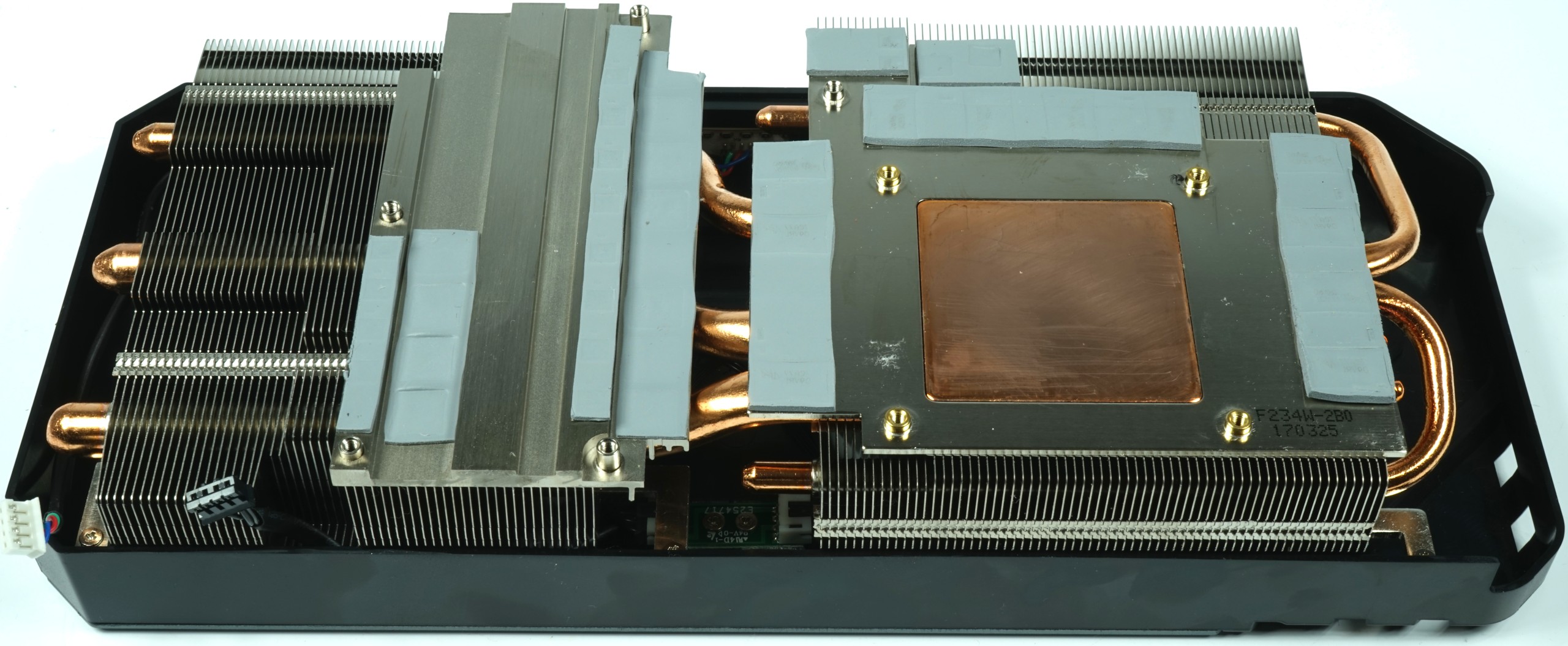
Fan curves and noise emission ("volume")
The fan curves indicate a conservative and volume-optimized control, the hysteresis of the switch-on pulses is solved in an exemplary manner, which is certainly also due to the installed fan control (see page 2).
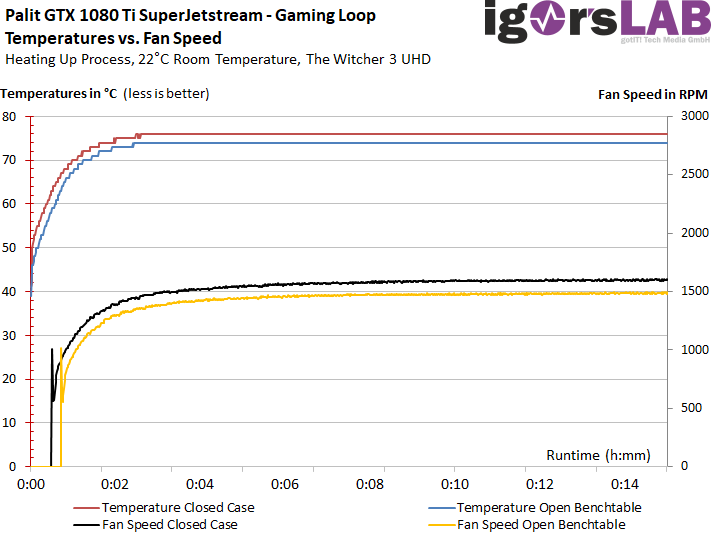
In the stress test, the fan speeds are even slightly lower, because Boost already slows down the power consumption of the GPU a little.
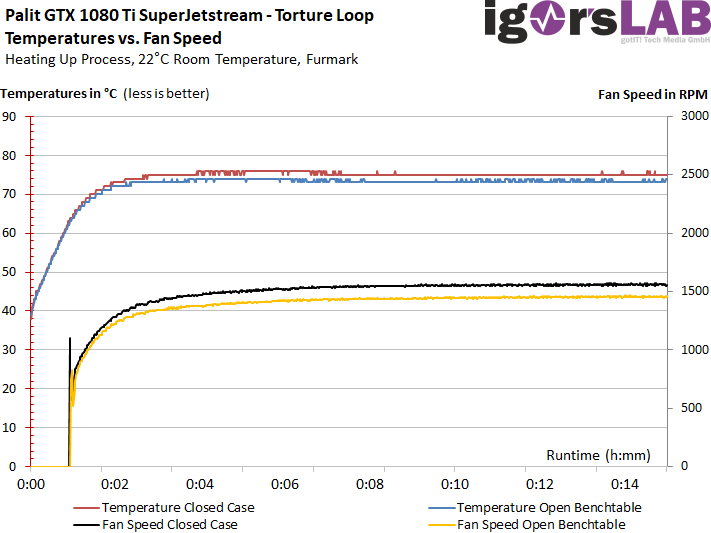
| Measurements for fans and noise emission |
|
|---|---|
| Fan speeds Open Benchtable Maximum |
1495 rpm |
| Fan speeds Open Benchtable Average |
1471 rpm |
| Fan Speeds Closed Case Maximum | 1611 rpm |
| Fan Speeds Closed Case Average | 1589 rpm |
| Noise emission (air) Maximum |
40.3 dB(A) |
| Noise Emission (Air) Average |
39.8 dB(A) |
| Noise Emission (Air) Idle | 0 dB(A) |
| Sound characteristic / Hearing impression |
light engine noise< 1 Hz hardly spool-feathers strong air/demolition noise at full load |
To illustrate our subjective audio impression once again, we now have a high-resolution graphic with the complete frequency spectrum of our laboratory measurement:
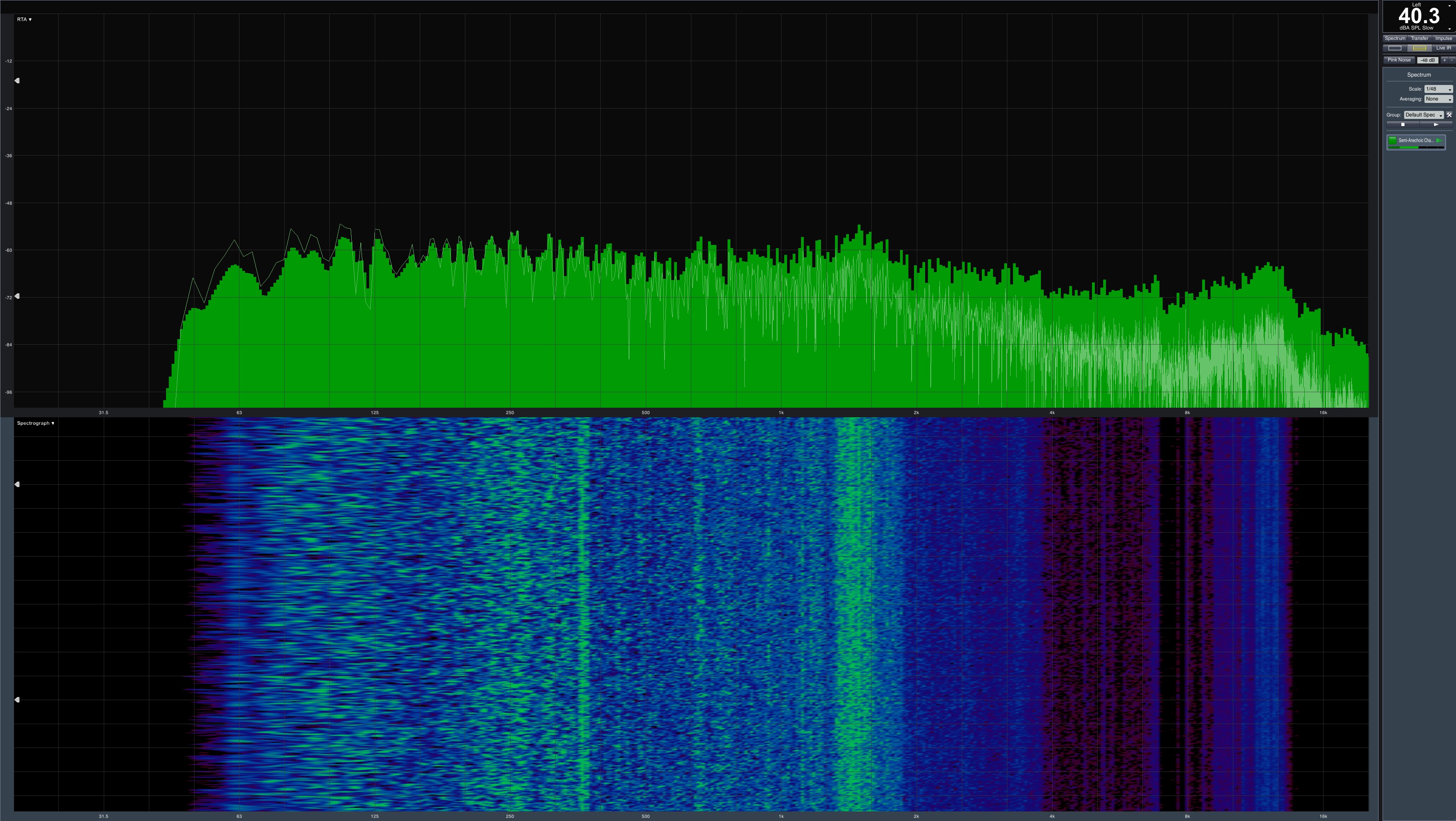
































Kommentieren